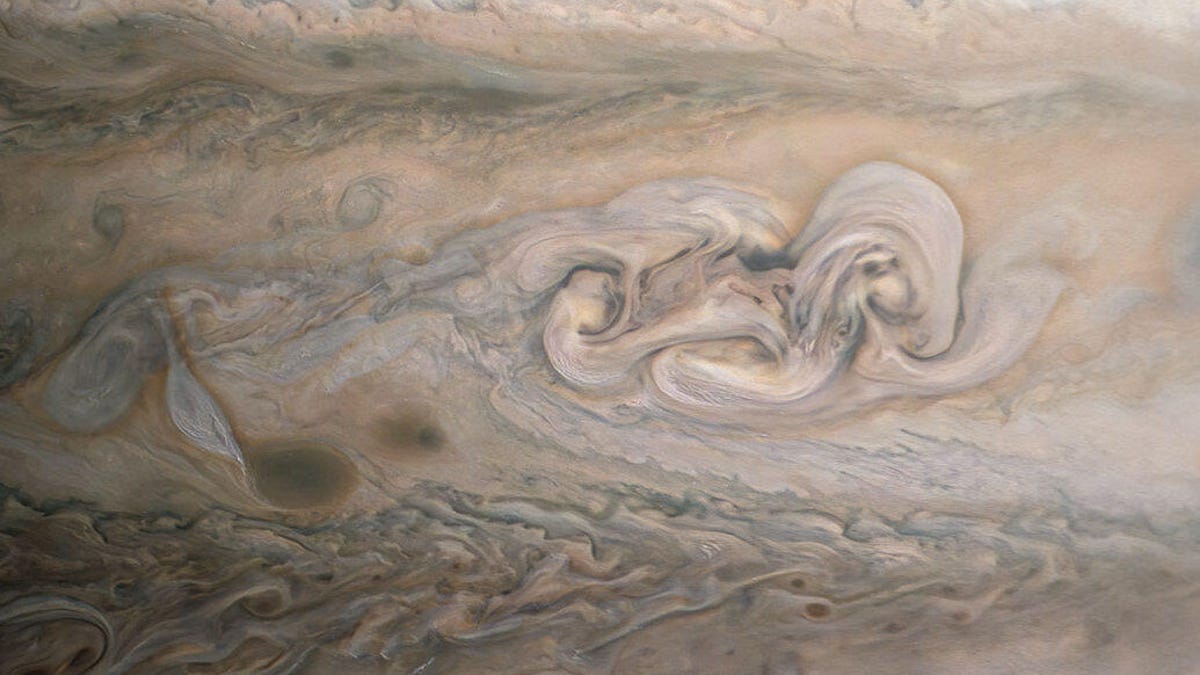NASA gets wild new view of distinctive 'Clyde's Spot' on Jupiter
The Juno spacecraft found the feature giving itself a whirl.
In 2020, amateur astronomer Clyde Foster discovered an oval-shaped feature on Jupiter lingering near the famous Great Red Spot. That year, NASA's Juno spacecraft swept by and snagged a good look at the feature, nicknamed "Clyde's Spot." Juno revisited the spot in April 2021 and found it had a wild new look.
NASA described the spot in a statement on Tuesday as "a plume of cloud material erupting above the top layers of the Jovian atmosphere." Jupiter is known for producing funky atmospheric formations, many of which dissipate fairly quickly, but Clyde's Spot has some staying power.
NASA said Clyde's Spot has "developed into a complex structure that scientists call a folded filamentary region. This region is twice as big in latitude and three times as big in longitude as the original spot, and has the potential to persist for an extended period of time."
Clyde's Spot looked pretty compact on Jupiter in June 2020.
The new Juno observation shows the smaller spot has migrated away from the Great Red Spot. The differences in the images taken nearly a year apart are striking. In 2020, the spot looked compact. In 2021, it looked like an abstract set of swirls, like paint swishing around in water.
Kevin Gill -- who has delivered many wonderfully processed space images -- worked with the Juno data to enhance the images and highlight the spot's changes over time.
Juno, which launched in 2011, has had its mission extended until 2025. Clyde's Spot is a testament to Juno's ongoing investigation of Jupiter and is also a vivid example of how dynamic the planet can be. It's not just an atmosphere, it's an adventure.
Follow CNET's 2021 Space Calendar to stay up to date with all the latest space news this year. You can even add it to your own Google Calendar.


